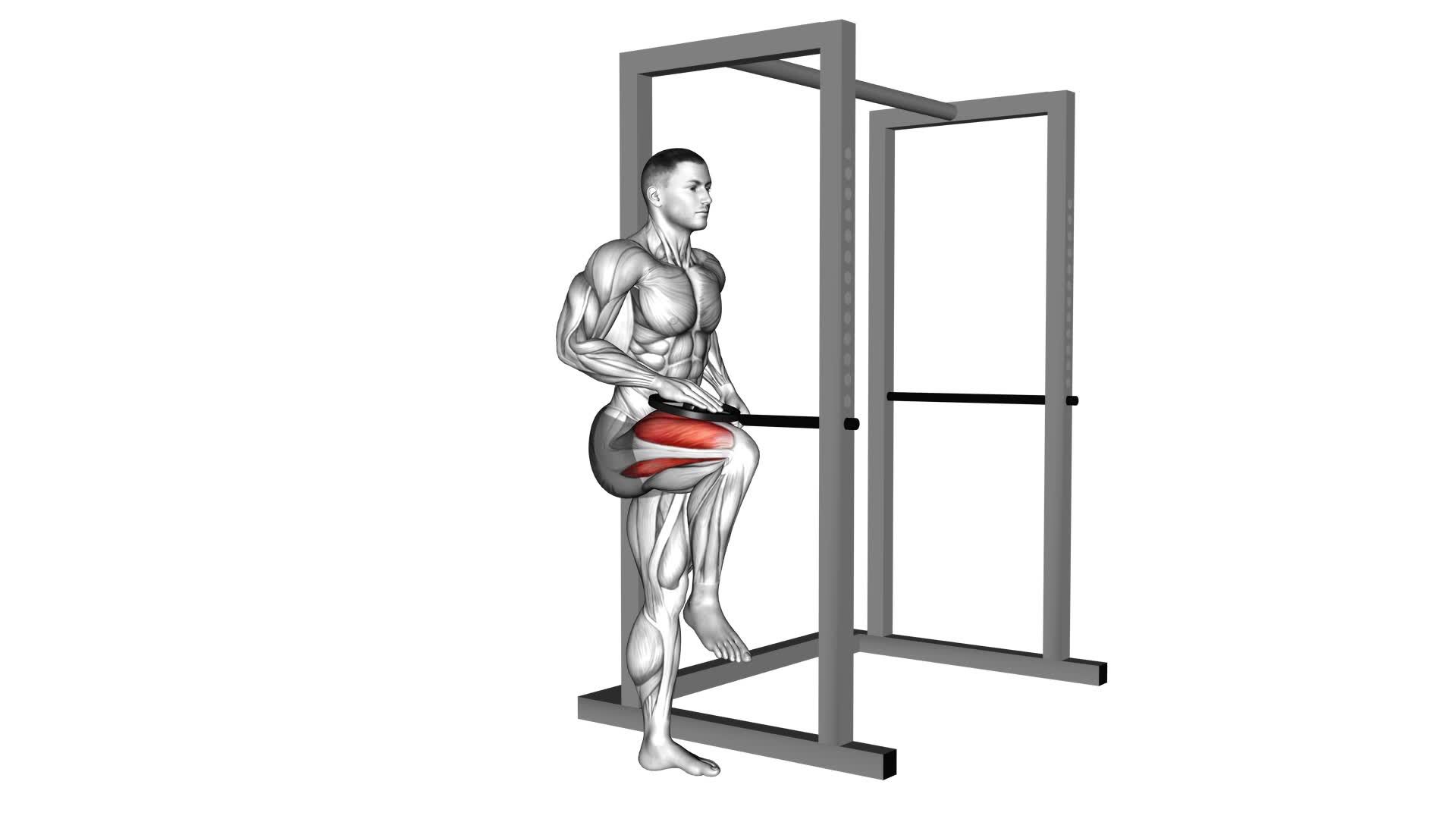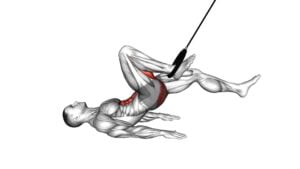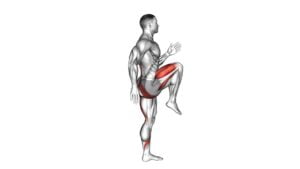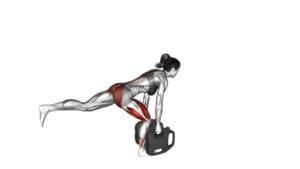Weighted Single Leg Lift – Video Exercise Guide & Tips

Are you looking for an effective lower body exercise that targets your glutes, hamstrings, and quads? Look no further than the weighted single leg lift!
Watch This Exercise Video
In this video exercise guide, we'll show you the proper form and technique to get the most out of this exercise.
With tips on equipment selection and common mistakes to avoid, you'll be able to add variations and progressions to your routine.
Get ready to sculpt and strengthen your legs with this challenging yet rewarding exercise.
Key Takeaways
- Weighted single leg lifts target muscles in the legs such as quadriceps, hamstrings, and glutes.
- Engaging core muscles for stability is an important aspect of weighted single leg lifts.
- Weighted single leg lifts promote muscle growth and development.
- Weighted single leg lifts improve balance and stability while reducing the risk of falls or injuries.
Benefits of Weighted Single Leg Lift
You can experience increased strength and stability in your legs and core by incorporating the weighted single leg lift into your workout routine. This exercise offers a multitude of weightlifting benefits and muscle activation.
Firstly, the weighted single leg lift targets the muscles in your legs, such as the quadriceps, hamstrings, and glutes. By adding resistance through weights, you can effectively challenge these muscles and promote muscle growth and development. This exercise also engages your core muscles, including the abdominals and obliques, as they work to stabilize your body throughout the movement.
In addition to building strength, the weighted single leg lift improves balance and stability. By performing the exercise on one leg, you activate the muscles responsible for maintaining balance and stability, such as the hip stabilizers and ankle muscles. Regularly incorporating this exercise into your routine can help enhance your overall stability, reducing the risk of falls or injuries.
Proper Form and Technique
To execute the weighted single leg lift with proper form and technique, focus on maintaining a stable and balanced position throughout the movement. This exercise primarily targets the gluteus maximus, hamstrings, and quadriceps muscles.
One common misconception is that you need to lift the leg as high as possible. However, the goal is to maintain control and stability rather than achieving a high leg lift. Keep your core engaged and your spine neutral throughout the exercise.
Another important aspect is to avoid leaning or tilting to one side. This can be achieved by keeping your hips level and not allowing them to drop or rotate.
As for modifications and adaptations, you can start by performing the exercise without any weights, gradually adding weight as you progress. Additionally, if you find it challenging to balance on one leg, you can use a chair or wall for support.
Remember to listen to your body and adjust the exercise as needed to ensure proper form and technique.
Equipment and Weight Selection
To properly select the appropriate equipment and weight for the weighted single leg lift, continue focusing on maintaining a stable and balanced position throughout the movement. Equipment selection is an important aspect of this exercise. You can use a dumbbell, kettlebell, or a weighted barbell. Choose a weight that challenges you but still allows you to perform the exercise with proper form and technique.
Start with a lighter weight and gradually increase the load as you progress. This is known as weight progression. It's crucial to gradually increase the weight to avoid overloading your muscles and risking injury. As a general guideline, aim to increase the weight by 5-10% once you can comfortably perform 10-12 repetitions with the current weight.
Common Mistakes to Avoid
When performing the weighted single leg lift, it's important to be aware of common mistakes in order to maintain proper form and maximize the effectiveness of the exercise. Here are three common mistakes to avoid for proper execution:
- Allowing the knee to cave in: One common mistake is letting the knee collapse inward during the lift. This not only puts unnecessary stress on the knee joint but also reduces the activation of the glute muscles. To prevent this, focus on keeping your knee in line with your toes throughout the movement.
- Rounding the back: Another mistake to avoid is rounding your back during the exercise. This not only places strain on the lower back but also shifts the focus away from the targeted muscles. To maintain proper form, engage your core and keep your spine neutral throughout the lift.
- Using excessive momentum: Using momentum to lift the weight instead of relying on your muscles is a common mistake. This reduces the effectiveness of the exercise and increases the risk of injury. Instead, focus on controlled and slow movements, concentrating on engaging the muscles throughout the entire range of motion.
Variations and Progressions
To progress the weighted single leg lift, you can incorporate variations to challenge your muscles in new ways. By trying different leg exercises, you can target specific muscle groups and enhance your overall strength and stability.
One advanced single leg variation is the pistol squat. This exercise requires you to balance on one leg while lowering your body down into a squat position. It engages your quads, glutes, and core muscles, providing a great challenge for your lower body.
Another variation is the Bulgarian split squat. This exercise involves elevating one foot on a bench or step behind you while performing a lunge with the other leg. It works your quads, hamstrings, and glutes, helping to improve your balance and stability.
Additionally, you can try the single leg deadlift, which targets your hamstrings, glutes, and lower back. This exercise involves hinging at the hips and reaching down towards the floor while balancing on one leg.
Frequently Asked Questions
How Many Sets and Repetitions Should I Do for Weighted Single Leg Lifts?
For weighted single leg lifts, it's important to consider your fitness level and goals. As a general guideline, start with 2-3 sets of 8-12 repetitions per leg. This will help build strength and stability.
Remember to use proper form, keeping your core engaged and your back straight. As you progress, you can increase the weight or reps.
Consult with a fitness professional for personalized guidance and to learn different variations of weighted single leg lifts.
Can Weighted Single Leg Lifts Help With Improving Balance and Stability?
Weighted single leg lifts can be a great exercise for improving balance and stability. By adding extra weight, you challenge your muscles and force them to work harder to maintain control and balance.
This exercise also helps in enhancing core strength, as your core muscles are engaged to stabilize your body throughout the movement.
Incorporating weighted single leg lifts into your routine can be beneficial for overall stability and core strength.
Are There Any Modifications or Alternatives for Individuals With Knee or Hip Pain?
If you have knee or hip pain, there are modifications and alternatives you can try for weighted single leg lifts.
To address knee pain, you can decrease the weight or use a resistance band instead.
For hip pain, you can perform exercises like clamshells or hip bridges.
These exercises can help strengthen the muscles around your knees and hips, without putting too much stress on the joints.
Always consult with a healthcare professional before starting any new exercise routine.
How Often Should Weighted Single Leg Lifts Be Incorporated Into a Fitness Routine?
To incorporate weighted single leg lifts into your fitness routine, it's important to consider the benefits they offer. These exercises can help improve balance, stability, and strengthen the muscles in your legs and core.
It's recommended to perform weighted single leg lifts two to three times a week, allowing for proper rest and recovery.
Remember to start with lighter weights and gradually increase as you become more comfortable and confident in your form and strength.
Can Weighted Single Leg Lifts Be Effective for Targeting Specific Muscle Groups Such as the Glutes or Hamstrings?
Weighted single leg lifts can be highly effective for targeting specific muscle groups such as the glutes or hamstrings. During this exercise, the muscles in your legs and hips are activated to lift the weight, resulting in increased strength and muscle development.
Conclusion
In conclusion, the weighted single leg lift is a beneficial exercise for improving strength and stability in the legs.
By maintaining proper form and technique, selecting the appropriate equipment and weight, and avoiding common mistakes, you can maximize the effectiveness of this exercise.
Additionally, exploring variations and progressions can help you continually challenge and progress your fitness level.
Incorporate this exercise into your routine to target and strengthen your leg muscles.

Author
Years ago, the spark of my life’s passion ignited in my mind the moment I stepped into the local gym for the first time. The inaugural bead of perspiration, the initial endeavor, the very first surge of endorphins, and a sense of pride that washed over me post-workout marked the beginning of my deep-seated interest in strength sports, fitness, and sports nutrition. This very curiosity blossomed rapidly into a profound fascination, propelling me to earn a Master’s degree in Physical Education from the Academy of Physical Education in Krakow, followed by a Sports Manager diploma from the Jagiellonian University. My journey of growth led me to gain more specialized qualifications, such as being a certified personal trainer with a focus on sports dietetics, a lifeguard, and an instructor for wellness and corrective gymnastics. Theoretical knowledge paired seamlessly with practical experience, reinforcing my belief that the transformation of individuals under my guidance was also a reflection of my personal growth. This belief holds true even today. Each day, I strive to push the boundaries and explore new realms. These realms gently elevate me to greater heights. The unique combination of passion for my field and the continuous quest for growth fuels my drive to break new ground.



